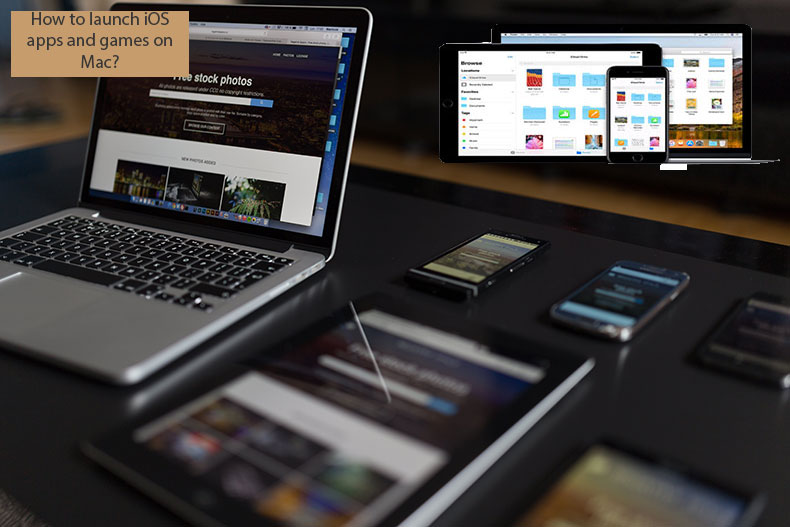How to Run 32-Bit Apps in macOS Catalina. Apple's latest version of macOS, Catalina, officially ditches 32-bit app support, but you can still run the software you need by following these steps. The only way you can run an app available on the App Store is on an iOS device. The iOS Simulator is available along-with Xcode (developer tool to develop apps for various Apple hardware devices). You can build and run an app in iOS simulator only if you have access to the source code for the app (generally personal or open-source projects). Yes, but.currently the only way to run iOS apps on a Mac is via the iPhone/iPad Simulator (available in the iOS SDK). AND you need the source code for the app you want to run.
Apple announced its first chip in the Apple Silicon family, dubbed M1, meant to power next-gen Macs. The American tech company announced three new Macs, a Mac Mini, a 13-inch MacBook Pro, and a 13-inch MacBook Air, all powered by the M1 chip.
New details of macOS Big Sur were announced at the “One More Thing” event, including native support to run iPhone and iPad apps. Also, the company announced a new feature called universal apps.

Universal apps include a native binary version built for Apple Silicon and Intel processors.
Companies like Adobe and Omni Group are already working on launching universal apps. Adobe Lightroom will be available as a universal app next month, and others like Photoshop will be launching early next year.
And for app developers who haven’t upgraded to Universal, the Mac can natively run those Intel-based apps without any issues.
At the event, Apple said this is all possible due to Rosetta 2 technology included in macOS Big Sur.
Rosetta 2 technology enables M1 powered Macs to run apps natively built for Intel-based Macs. Apple claims that some graphic-intensive Intel-based apps even run better on Apple Silicon Macs due to Rosetta 2.
So even if Adobe Lightroom is yet to go the Universal route, you can still use it on latest Macs running the M1 chip. This is Apple’s solution to help its Mac users transition smoothly to Apple Silicon.
Besides, native support of iOS and iPad OS apps expands the number of apps available for the Macs.
M1 powered Mac running HBO Max iPhone app
Apple is also providing developers with an easier time to transition by enabling them to optimize code across platforms on the go.
The company projects to fully transition Macs to its in-house silicon in two years.

Read Next: Apple Announces 13-inch MacBook Air, MacBook Pro and Mac Mini powered by inhouse M1 Chip
Native Mac apps built with Mac Catalyst can share code with your iPad apps, and you can add more features just for Mac. In macOS Big Sur, you can create even more powerful versions of your apps and take advantage of every pixel on the screen by running them at native Mac resolution. Apps built with Mac Catalyst can now be fully controlled using just the keyboard, access more iOS frameworks, and take advantage of the all-new look of macOS Big Sur. There’s never been a better time to turn your iPad app into a powerful Mac app.
Designed for macOS Big Sur.
When an app built with Mac Catalyst runs on macOS Big Sur, it automatically adopts the new design. The new Maps and Messages apps were built with the latest version of Mac Catalyst.
Can I Run Ios Apps On A Mac Os
Get a head start on your native Mac app.
Your iPad app can be made into an excellent Mac app. Now’s the perfect time to bring your app to life on Mac. The latest version of Xcode 12 is all you need. Begin by selecting the “Mac” checkbox in the project settings of your existing iPad app to create a native Mac app that you can enhance further. Your Mac and iPad apps share the same project and source code, making it easy to make changes in one place.
Optimize your interface for Mac.
Your newly created Mac app runs natively, utilizing the same frameworks, resources, and runtime environment as apps built just for Mac. Fundamental Mac desktop and windowing features are added, and touch controls are adapted to the keyboard and mouse. By default, your app will scale to match the iPad’s resolution. On macOS Big Sur, you can choose “Optimize interface for Mac” to use the Mac idiom, running your app using the native resolution on Mac. This gives you full control of every pixel on the screen and allows your app to adopt more controls specific to Mac, such as pull-down menus and checkboxes.
Even more powerful.

The new APIs and behaviors in macOS Big Sur let you create even more powerful Mac apps. Apps can now be fully controlled using just the keyboard. You can create out-of-window and detachable popovers, control window tabbing using new window APIs, and make it easier for users to select photos in your app by using the updated Photos picker. iOS Photos editing extensions can now be built to run on Mac. And your app is even easier to manage when it’s running in the background with improved app lifecycle APIs.
New and updated frameworks.
Run Ipad App On Mac
Mac Catalyst adds support for new and updated frameworks to extend what your apps can do on Mac. HomeKit support means home automation apps can run alongside the Home app on Mac. The addition of the ClassKit framework lets Mac apps track assignments and share progress with teachers and students. Plus, there are updates to many existing frameworks, including Accounts, Contacts, Core Audio, GameKit, MediaPlayer, PassKit, and StoreKit.
Run Iphone Apps On Mac
Tools and resources.
Download Xcode 12 and use these resources to build native Mac apps with Mac Catalyst.